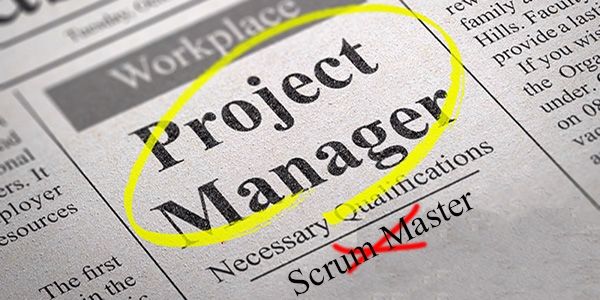5 Tips to Employee Engagement for Remote Teams
After hiring candidates, companies often ignore the importance of their employees’ well-being. If you’re wondering why some companies can have a high turnover rate, regardless of how popular they are among giant names, the percentage of employee engagement is one of those contributing factors to this situation.
While managers can set up a fun activity to keep their employees engaged at the office, they can’t really do the same now due to the Covid-19 pandemic. This dreadful situation has forced many to put employees’ safety first. Hence, working from home isn’t that odd anymore.
That doesn’t mean managers can’t initiate an employee engagement program on remote terms. This article will dive into how businesses can thrive by improving employee engagement even though they are working away from the office.
Advertisement
[widget id=”custom_html-68″]
The Importance of Employee Engagement
Employees are companies’ biggest assets. Keeping them happy at your workplace will greatly benefit your business. After all, happy employees will do their best at work, resulting in better outcomes.
Here are a few benefits of getting your employees engaged.
Reduce turnover rates
Turnover is often one of the manager’s biggest enemies when it comes to ensuring a running project. Sometimes employees can quit at a time when companies need them the most, and that’s something managers can’t avoid or hold them to stay longer. This is where employee engagement plays a big part in avoiding this situation.
When companies pay attention to employees’ difficulties at work and provide them with a solution that helps overcome the situation, employees can put more trust in the organization. More trust means higher loyalty, which decreases their consideration to move out.
This can be done if the company provides a number of onboarding processes via training videos to help employees get the experience of what they can expect from the company. The onboarding also improves the communication between the company and employees so that they get engaged from the get-go.
Improve productivity
Productivity has been linked to employees’ ability to finish a task and handle a situation in a timely manner. But when said employees are unable to concentrate at work, whether it’s from internal or external problems, they may lose their performance. If companies have engaged with employees well, things that may potentially reduce productivity can be identified and avoided quickly.
Better customer service
Enthusiastic employees at work bring such a positive vibe around them. This can often be seen in the way employees treat and communicate with customers. Highly engaged employees don’t see work as an inevitable responsibility as an adult. They consider getting up every day to work to ensure they provide solutions to customers they are communicating with while also benefiting from working.
5 Tips to Improve Employee Engagement for Remote Team
1. Encourage two-way communications
Communication is key in every part of life, including the workplace. Make sure to always have clear communication with employees, so you can get rid of misunderstandings at work.
After all, the workplace is one of the common areas where people get misunderstood easily. If you can’t initiate direct, two-way communication with people working in your organization, they may feel left out and consider you don’t provide the solution they are facing at the moment.
2. Listen to them
Make sure your employees don’t get left out even though they are working on a remote term. While they don’t often show any difficulties because of the distance, managers should ensure if they are doing okay in the first place.
Many won’t initiate a conversation due to location and time differences. That’s why employees keep almost everything about work themselves—asking if they face a certain problem while remote working can improve their connection with you and possibly open up for more conversation in the future.
3. Recognize their efforts
Companies often don’t see what their employees have done in maintaining their performance at work. Managers only see the result without considering how much effort one has put into gaining such an outcome.
Make sure to recognize your employees’ efforts and appreciate them for what they do. After all, everyone’s hard work has made it possible for the company to thrive in this difficult time. So, show them that you acknowledge their work.
4. Reward your employees
The act of acknowledging someone’s work may come in many forms, including giving a simple ‘thanks’ and round applause. While these are common and relatively inexpensive, you can go as far as giving points or a bonus as a reward for their hard work.
Your employees will surely appreciate it if their boss shares gifts or free coupons to the nearest villa when they achieve a goal. It shows that companies take care of their employees by giving them a reward after working hard.
Knowing how companies take little things, such as small wins matter, will improve how employees see their workplace. This convinces them more that they are working in the right place.
5. Create fun activities together
Sometimes working from the home policy can greatly impact employees in terms of getting burnout quickly. Compared when working in the office, employees could say hi to each other and wind down a little bit when the tension was too serious or when the workload was so heavy.
Remote working means the ability to communicate with other teammates is limited, which often causes more stress to employees. In order to avoid a quick burnout, managers can provide fun activities or games virtually. Getting into games can reduce stress and boost the employee’s motivation to work after it’s done.
Takeaway
Remote teams are prone to having burnout because they are limited to doing certain activities like they used to. When employees are easily stressed out without a quick handle from the company, they will feel excluded from the entire organization.
In the long term, such condition may reduce their performance and ownership as they don’t feel connected at all. Managers can handle this situation by taking into consideration what makes these employees engaged again.
It’s crucial to introduce exciting activities to boost up their mood. Make sure to listen to their voices and create a safe space for a private conversation. These will help remote employees engage in the company they are working.





